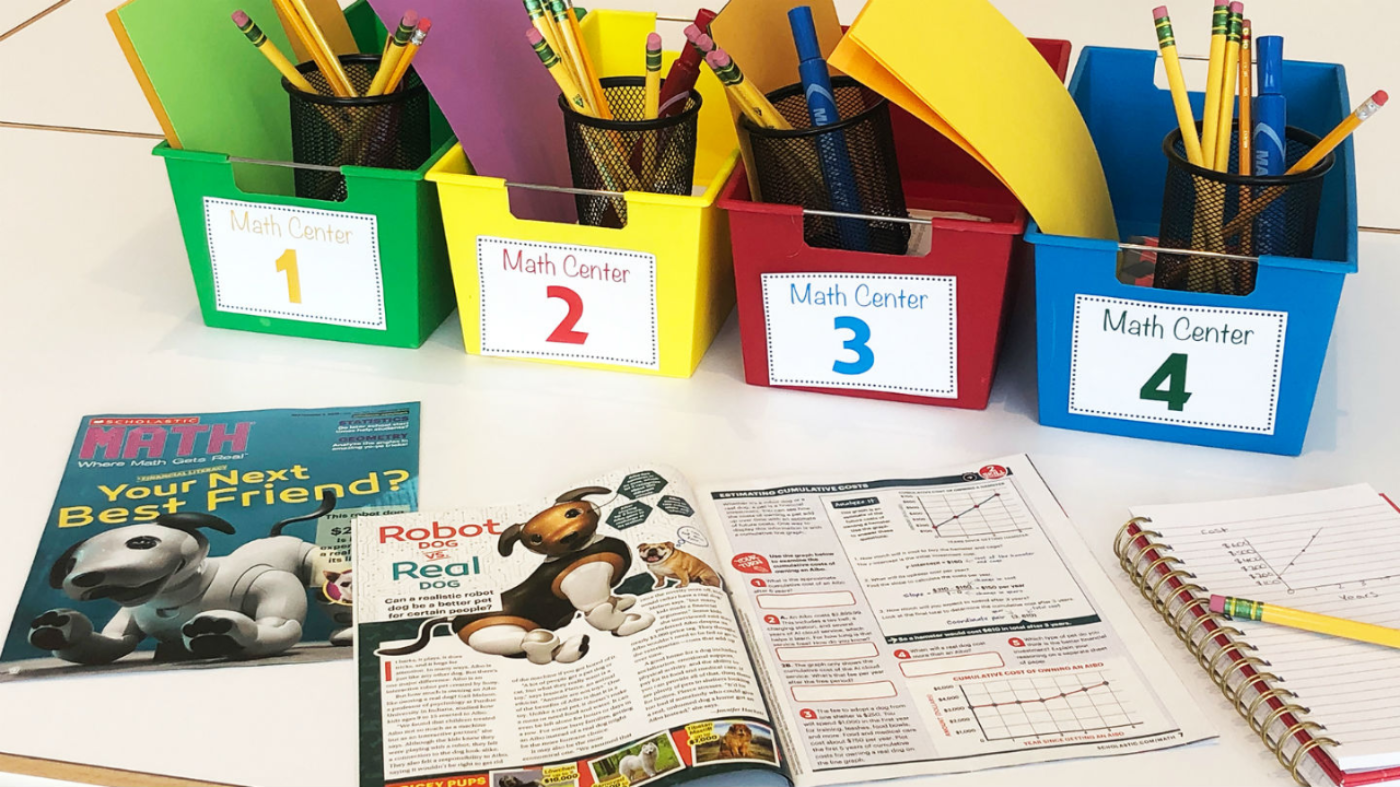How to Set Up Math Stations in 4 Easy Steps!
Easy-to-implement ideas for creating a stations model in your math classroom.
How to Set Up Math Stations in 4 Easy Steps!
Key Takeaways
- Stations provide an opportunity for students to engage with math concepts in a new way while building the skills to work collaboratively and independently.
- Rearrange your classroom into station spaces by clustering desks or tables together. Use color coding to help separate stations if you do not have a lot of space.
- Student work doesn’t have to be graded or collected every time. Allowing them to practice mathematical concepts with a stations model can provide the necessary skill-building they need to gain confidence.
A few years ago, I grappled with finding a student-centered way to better differentiate instruction in my math classroom. I really wanted to teach to small groups of like-minded students because the skill level in any classroom can range so drastically. Stations (or centers) became a very real possibility for me to use as an instructional model. It allowed me to add structure within the classroom because I was able to group my students based on their instructional readiness. Scholastic MATH magazine has proven to be a great station resource with its real-world articles, skill worksheets and online resources like google quizzes and videos. For those teaching grades 3-5, use DynaMath magazine for your stations. After lots of trial and error, I determined four key takeaways that made stations work effectively. Now I implement this model at the start of every new school year!
1. Make your furniture work for you!
Bookcases and tables can be used to separate spaces into clearly defined stations. If you want a station where students are working together, cluster a few tables together. Split tables apart and line them against the wall for independent work spaces. Bookcases and carts also can be used as dividers to provide a visual blocker between stations. I use colored bins/baskets as an identifier for each station so that students know where to move to next.
A great way to set up a small group teacher-led station is to have student desks form a “U” shape around your board. You can position yourself in the middle of the desks to be within arms-reach of all learners. However you set up your room, make sure you have space to easily walk around and provide help when needed.
2. Clearly define expectations!
Each station should be carefully planned out with clear directions for students to follow. Consider typing them out and having them visually accessible. Students will need a lot of reinforcement in terms of what to do at each station, how to move from one station to another, and more. You can assign a task leader for each station to help students stay on track with their work. Students oftentimes put more strict expectations on themselves and their classmates than teachers!
3. Create easy but engaging station activities!
Not every station has to have something finite for the students to complete. Games, puzzles, and texts can be great ways to expose students to math concepts without forcing them to complete a worksheet or a set number of problems.
Scholastic MATH and DynaMath magazines are my go-to resource when looking for connections to the real world. You can have students read a particular article and complete the accompanying math skill or let them choose an article or skill that intrigues them. Skill worksheets can easily be turned into a game by providing answers as a deck of cards and students work together to match them to the correct problem.
Plus, if you’re looking to incorporate technology, have students take a picture of their progress and email it to you before the station time ends. Scholastic MATH and DynaMath magazines also provide fun online math games, a Google Quiz for each statistics article, and videos that teach different math skills.
4. Don’t be afraid of the noise!
Stations naturally come with noise from students working in groups. Your proximity to students can help them stay on task and be a gentle reminder of their volume level but be prepared for it to be noisier than a typical lecture setting. If you listen carefully, you’ll be surprised to hear that, most of the time, students are on task and talking (sometimes even debating) about mathematical concepts. You can encourage quiet voices by playing soft music and reminding everyone that you should always be able to hear the music over any conversation. Another idea is to use a bell or chime to make students aware that the volume may be getting too loud.
Stations are an exciting way to engage students in math. Activities can change frequently, and the natural breaks allow students to refocus or work on something different. Students also learn how to rely on themselves and even their classmates to solve problems. When I surveyed my students about the stations we used daily in my classroom, this is what they had to say:
“You’re not with the whole class and if you make a mistake no one cares.”
“It’s like you can relax a bit, but also get work done.”
For more fun ways to build problem-solving skills with engaging topics and real-world math, sign up for a FREE 30-day trial of Scholastic MATH or DynaMath magazines today!




